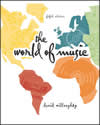Chapter 12 Music of the Classic Period (1750–1820) The establishment of the modern symphony, concerto, sonata, and
string quartet—and the music of Haydn, Mozart, and Beethoven The Classic period is presented as the beginning of the modern era in music. The sounds, genres, and forms that were established then are in common practice today. These include the instrumentation of the modern symphony orchestra and string quartet; the sonata, symphony, and concerto genres; and the sonata, minuet and trio, theme and variations, and rondo forms. The music was centered in the sophisticated, aristocratic courts and communities of Austria and Germany. The courts valued artistic and social status, but the music was becoming more available to the general public. Communities were building opera houses and concert halls. The musical characteristics reflected the Age of Reason: order, restraint, balance, and clarity; lyrical melodies, clear harmonies, and uncomplicated rhythms; and distinct formal structures. Modulations were common, but key relationships took on a new significance, Mozart. Haydn, and Beethoven are presented as the principal composers of the Classic period. Goals for Listening - Describe instrumental timbres
- Describe vocal style and technique (opera)
- Recognize variations of themes and motives
- Identify contrasting moods
- Recognize tonal centers (keys) and modulations
- Identify stability and instability
- Identify tension and release
- Identify contrast and repetition
|



 2003 McGraw-Hill Higher Education
2003 McGraw-Hill Higher Education